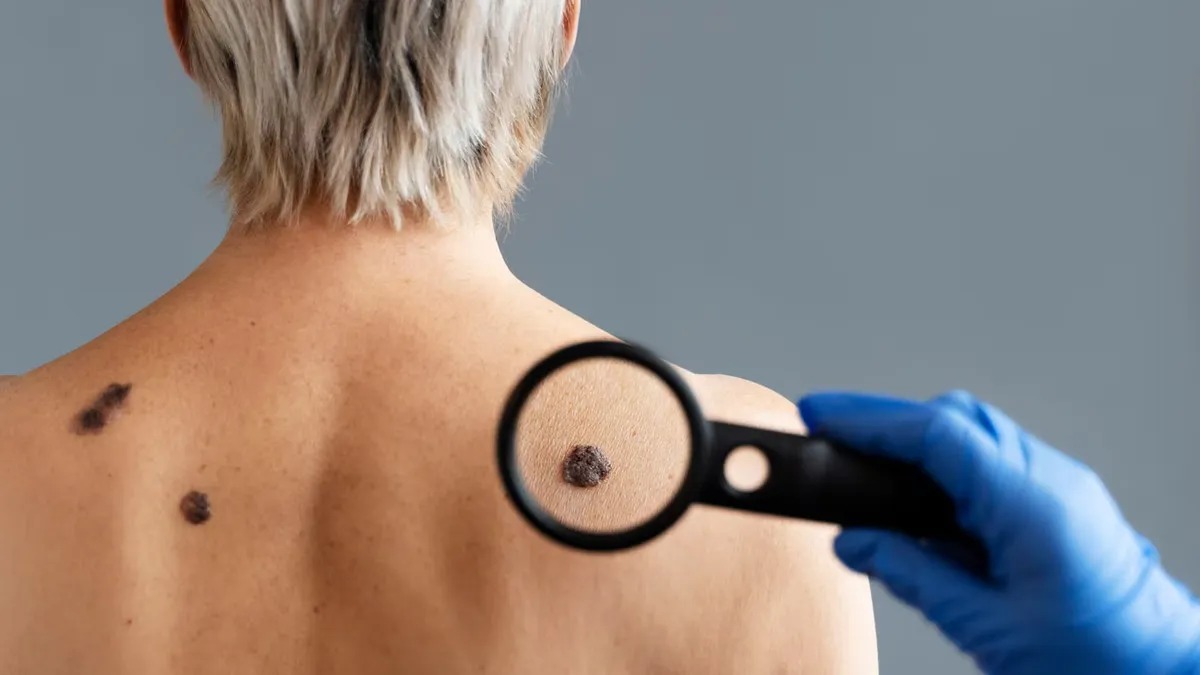Melanoma is a significant skin cancer, resulting in a menace to both men and women, especially when age is the influencing factor. A poll points to the fact that women are showing a greater occurrence of such a frightening melanoma before the age of 50, and from that point, their impact would otherwise be lessened by males. Biological, social, and environmental factors account for differences between men and women, making diagnosis and treatment more effective and timely by disambiguating them.
Chances are, age and sex will be taken into account when determining your “probability” of suffering from melanoma. It is quite likely that such differences pose a very significant boundary between males and females in age. However, these figures do not reveal the differences in awareness, prevention, and caregiving. Knowing such significant variations may save a life.
Melanoma is the most severe form of skin cancer, originating from specialised pigment cells known as melanocytes. It is less common than other skin cancers, with very aggressive tendencies, and usually metastasises in a matter of months if diagnosed in time. The most significant risk factor by far is solar or ultraviolet radiation. Awareness in early detection and know-how concerning gender differences save lives.
Gender-Based Differences Before Age 50
Hormonal Influence
The estrogen provides insight into its potential roles in immune regulation and skin cell dynamics, which will play a significant role in the development and progression of melanoma in young women.
Behavioral Differences
Women under 50 tend to consult dermatologists more frequently, which may lead to more active sun protection and skin checking practices, thereby favouring early detection.
Location of Tumours
The gender-based location differences in melanomas could also be due to customary styles of clothing and consequent exposure to the sun: in women, melanomas tend to develop on the legs, while in men, they are more frequently found on the back or trunk.
Biological and Genetic Factors
Melanoma Skin Cancer exhibits deep disparities in terms of biological and genetic factors between men and women. Higher estrogen levels in women may encourage better immune response and thus, offer the chance to help in protecting against early-onset melanoma, whereas men might carry mutation(s) in the BRAF or NRAS gene that potentially pose a higher risk after age 50. Personalised avenues of prevention and treatment can thus be adopted due to the biological differences between the sexes.
Using the comparative genetic and biological factors is important to perform deep differentiation in melanoma between men and women. It is because differential estrogen within the women may promote a stronger immune response and thus have a possible protective aspect concerning early-onset melanoma, while there may be some mutations in the BRAF or NRAS gene at a certain time in men, which tend to cause increased risk after the age of fifty. Such differences will thus enable different personalised avenues for prevention and treatment.
Why the Trend Reverses After Age 50
After age 50, men have an increased risk of melanoma and a worse prognosis. The CDC posits:
- Men aged over 65 have twice the risk of dying from melanoma compared to women.
- Diagnosis of older men shows thicker tumours, with more advanced disease.
Delayed Detection
Validation bias contributes further to the late diagnosis, during which time treatment is usually ineffective, since changes in the skin are not often noticed or reported by men.
Immune System Ageing
With ageing, the male immune system may become less competent in thwarting aberrant melanocytes from forming aggressive tumours.
Cumulative Sun Exposure
Men, especially those who spend most of their working hours outside, sustain higher amounts of cumulative exposure to the sun by midlife, which in turn puts them further at risk.
Prevention and Early Detection Tips for HCPs to Share
- Just as for very high-risk patients, monthly self-examinations of skin lesions are promoted.
- Dermatologist visits should be emphasised to be done at least once per year, especially for all men over 50.
- Reinforce the daily use of sunscreen, even during overcast days.
- It is important to teach those areas of sun exposure that would less likely be considered, including the ears, scalp, and back.
Frequently Asked Questions
Why do women have higher melanoma rates before 50?
Hormonal and behavioural factors likely sustain this process.
Why are men more at risk after 50?
Detection tends to be delayed in damages that have accumulated from sun exposure or with a decline in immune response.
Do men and women respond differently to treatment?
Certain studies suggest that women may have an immune system that functions more effectively, but this area remains under research.
What’s the survival rate for melanoma?
As per the ACS, if a case is diagnosed early, there is a 5-year survival rate of over 99%.
Is melanoma preventable?
Not completely preventable, certainly, but with the regular use of sun protection and skin checks, that risk is greatly reduced somewhere along the way.
Conclusion
Harshly complicated and aggressive melanoma, as one type of skin cancer, is characterised by gender differences, primarily around the age of 50. Within men and women, the biological differences, hormonal changes, genetic susceptibilities, and behavioural patterns often lead to differences in the disease. Among women under 50 years of age, better survival rates may be enjoyed due to hormonal protection and self-checking behaviour.
Conversely, increased risk in men after 50 years may result from a delay in diagnosis and more aggressive tumours. The health providers and society at large need to understand these gender dimensions. The outcomes may be better, and lives saved, if awareness is raised to promote early screening for melanoma, sun-awareness behaviour, and evidence-based treatment options. Further information regarding the melanoma type and treatment in detail is available at Melanoma Skin Cancer.





Leave a Reply